How to Train a Dog
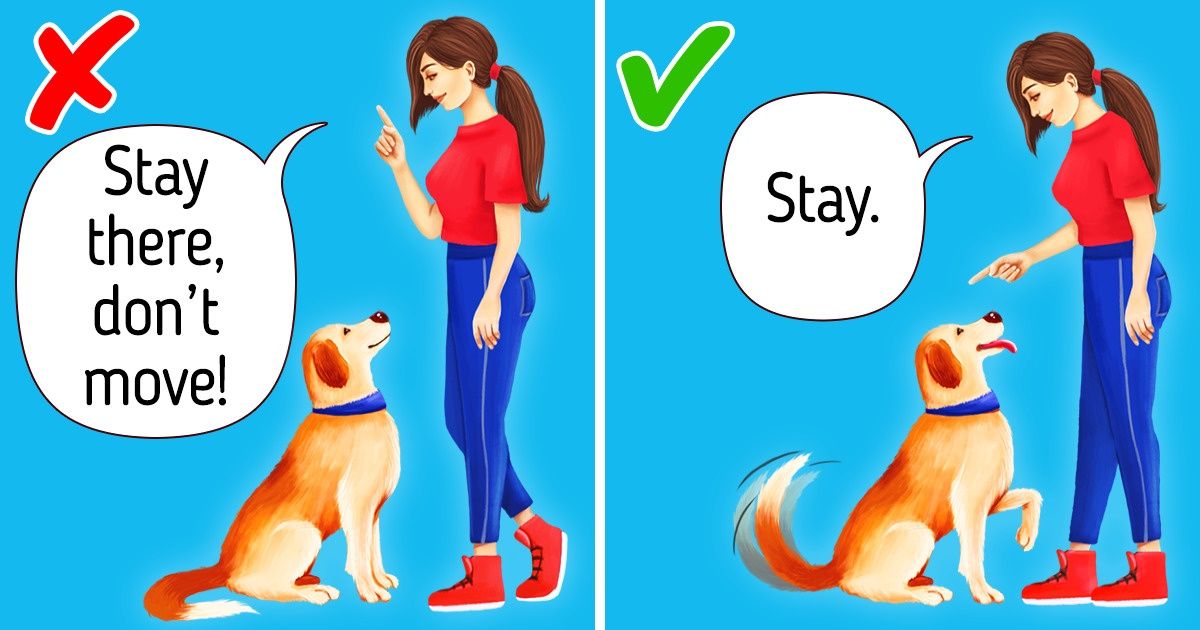
Training your dog is not only an effective way to get a more well-behaved and balanced pet but also a great bonding experience for you and your 4-legged friend. You just need to know a few proper training techniques and have a bit of patience to teach your dog some different tricks. And 5-Minute Crafts will explain the rules for how to safely train your dog and show you 5 basic commands to improve the quality of your life together.
General rules
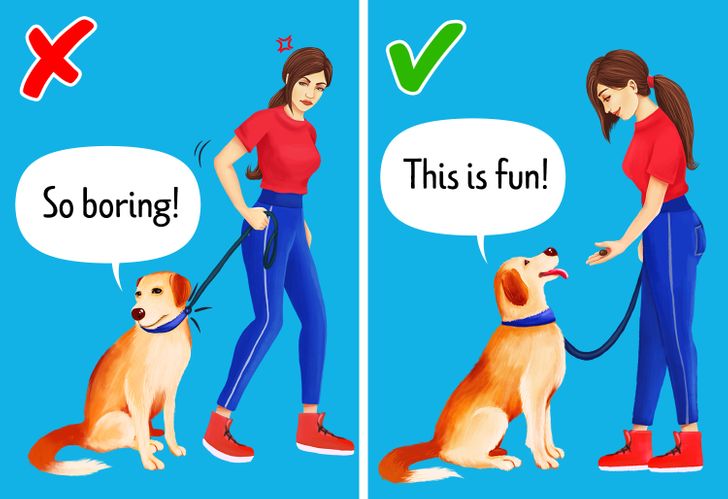
- The basic rule of dog training is that you should reward the behavior you like and not reward the behavior you don’t like. You just need to give your dog the motivation to do the things you like and make the training fun. Remember that dogs choose a certain pattern of behavior because it helps them to get what they want.
For example, if your dog begs for your dinner while you’re sitting at the table and at some point, you give your dog a bite, they’ll know that this is how they can get what they want. Instead, if this behavior bothers you, you should tell your dog to sit and not disturb you while you’re eating. When you’re done with your food, give them some treats to reward their patience.
- Determine what you want from your dog. Decide what actions you expect from your dog so their behavior will suit your lifestyle. Your goal is to figure out what obedience and entertaining tricks your dog needs to learn to make your life together easier and more fun.
- Be consistent with your responses. Make sure that you and everyone else who interacts with the dog have the same reaction to the dog’s actions. For example, if you don’t let your dog sit on the couch most of the time, but sometimes, you allow your pet to do it and even cuddle them, your dog may become confused about the actual rule.
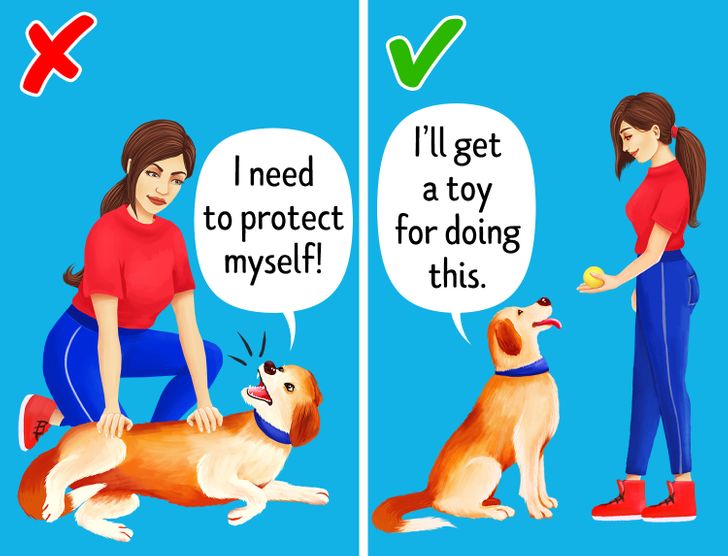
-
Be a good boss. Keep in mind that not rewarding the behavior you don’t like is different from hurting, dominating, or somehow intimidating your dog. When it comes to dog training, it’s not about showing them who the “alpha” is here, but about controlling your dog’s access to the things they like, for example, your affection, toys, and treats.
-
If you don’t like something your dog does, stop it immediately. Your dog won’t be able to make a connection between the event and your reaction if they’re separated in time. For example, if you’ve been playing with your dog and they slightly bite you, say “Ouch” to show your dog that their action hurts and stop the game right away. This way, your dog will understand that this action brought no fun.
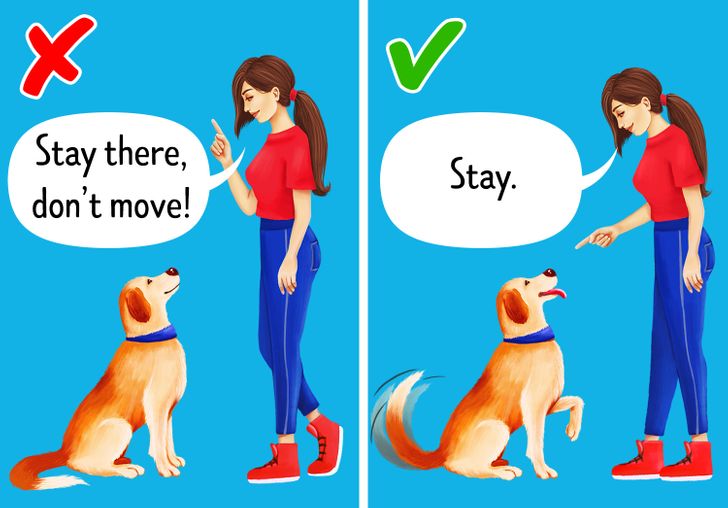
- Make your training sessions short. Dogs aren’t particularly good at focusing on the same task for a long period of time, so try to make your training sessions last about 15 minutes or less. Mix the training tasks up so your dog won’t get bored. Make sure you stop the session while your dog is still happy and enthusiastic about the process.
- Use the same words every time. Come up with the words and word combinations you use for particular commands and stick to them. They should be short and simple, like “sit,” “come on,” “up,” “stay,” and so on. For your dog, the terms “Max, come on” and “Max, let’s go” don’t sound like the same thing, so if you use them for the same command, they’ll leave your pet confused and frustrated. You can also use your body language, like pointing at things or snapping your fingers to communicate better with your dog.
- Don’t rush your dog. Training takes time and patience, so don’t expect your dog to perform the trick right away. Take baby steps, make sure the dog practices regularly with you and with other people, and be ready to take a few steps back in your training if you notice that the dog stopped making progress.
- Use real rewards that truly motivate your dog. Your dog’s preferences may change from time to time, and your pet may become indifferent to the treats they used to love. Remember that the environment in which you conduct your training also influences your dog. For example, a small and ordinary treat may be enough for your dog while you’re training at home. But you might have to go for something more impressive and unusual to make your dog perform the same trick at the park because, in this case, there will be more distracting factors.
Basic dog commands
1. Sit
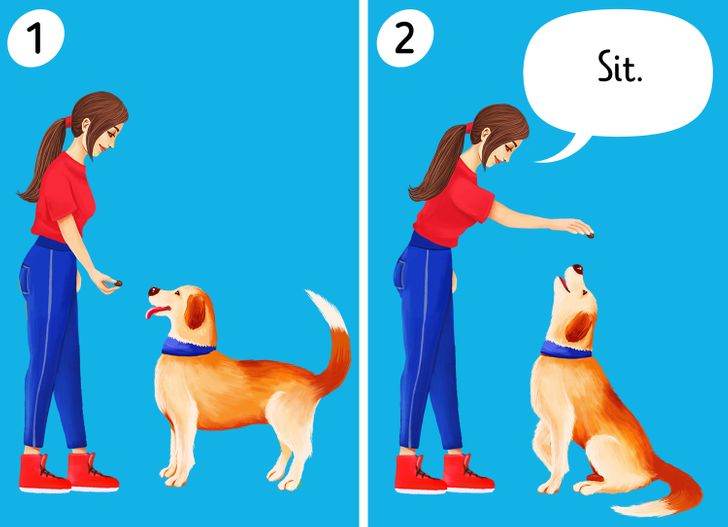
- Get a treat in your hand and place it close to your dog’s nose so they can smell it.
- Move your hand above the dog’s nose and slightly backward. Wait for your dog to sit because this way, it’ll be more comfortable for them to reach for the treat.
- When your dog sits, say “Sit” and give them the treat.
2. Come
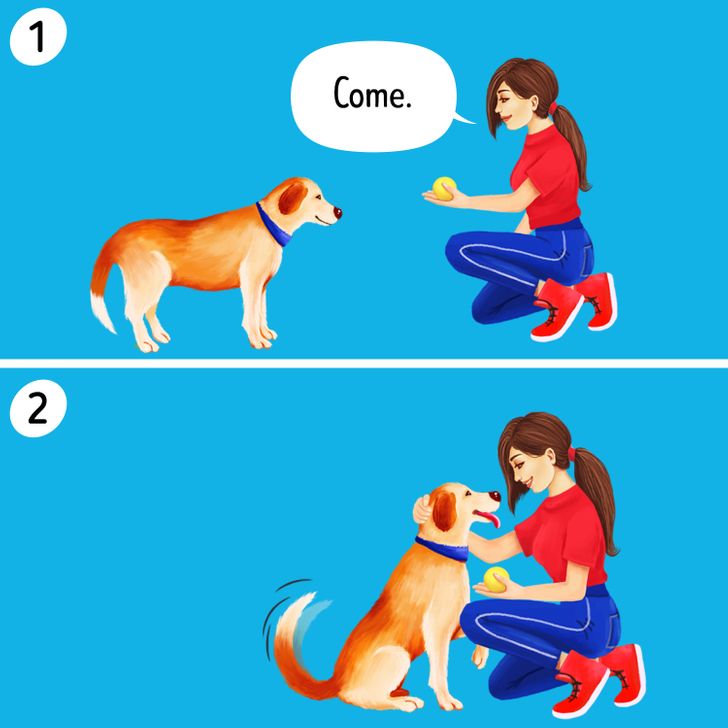
- Take a treat or a toy and show it to your dog. Then take a few steps back from the dog and say with excitement in your voice, “Come.” It’s better to start the training inside the house or in a safe restricted area like your yard.
- Wait for the dog to approach you, give them the toy or the treat, and praise them.
- Gradually increase the distance between you and the dog.
- If your dog performs this command confidently enough, move the training outside. Make sure that the space is safe for the dog. You can use a long training leash to make sure your dog won’t run away.
3. Down
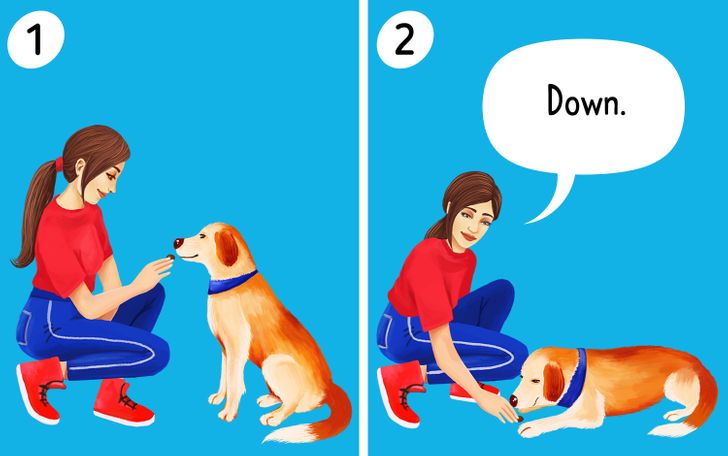
- Start with your dog in a sitting position and a treat in your hand. Move your hand, with the treat, from the dog’s nose to their chest level and then to the floor.
- The dog should follow the treat and lie down at the end of the movement.
- When the dog starts to lie down without any problem, add the command “Down” as your dog is getting into the down position.
4. Stay
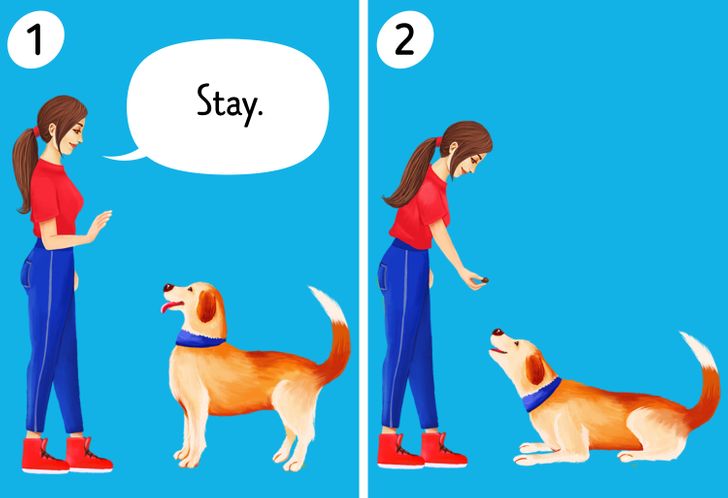
- Tell your dog to lie down.
- Show your dog a “stop” hand sign. Your palm should be facing the dog.
- Wait for a few seconds, say “Stay,” and reward the dog. Give the treat to the dog while they’re still lying down.
- Gradually increase the distance between you and the dog, while the dog stays in the “Stay” position.
5. Leave it
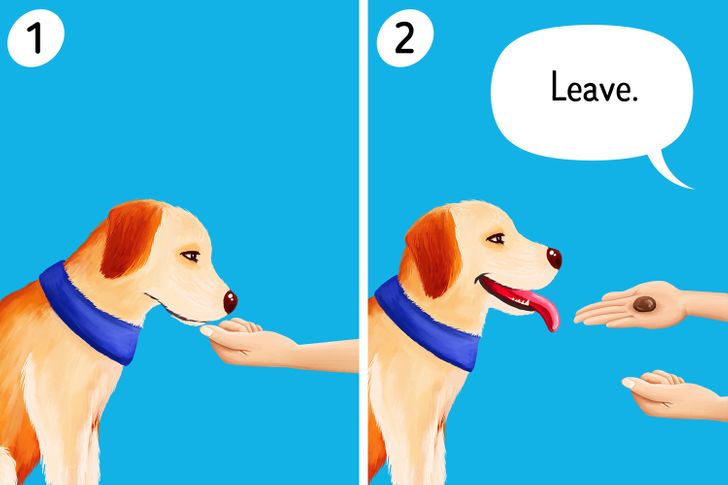
- Show your dog a treat and hide it in a tight fist. Encourage your dog to take it.
- At this point, your dog is likely to try to get the treat out of your fist. Wait patiently and don’t say anything.
- As soon as your dog backs off from your wrist, even for a couple of seconds, open your palm and allow the dog to take the treat. Praise your pet.
- Practice enough so the dog constantly backs off from the treat, and start saying “Leave” every time your pet moves away. You should still give them the treat and praise them.